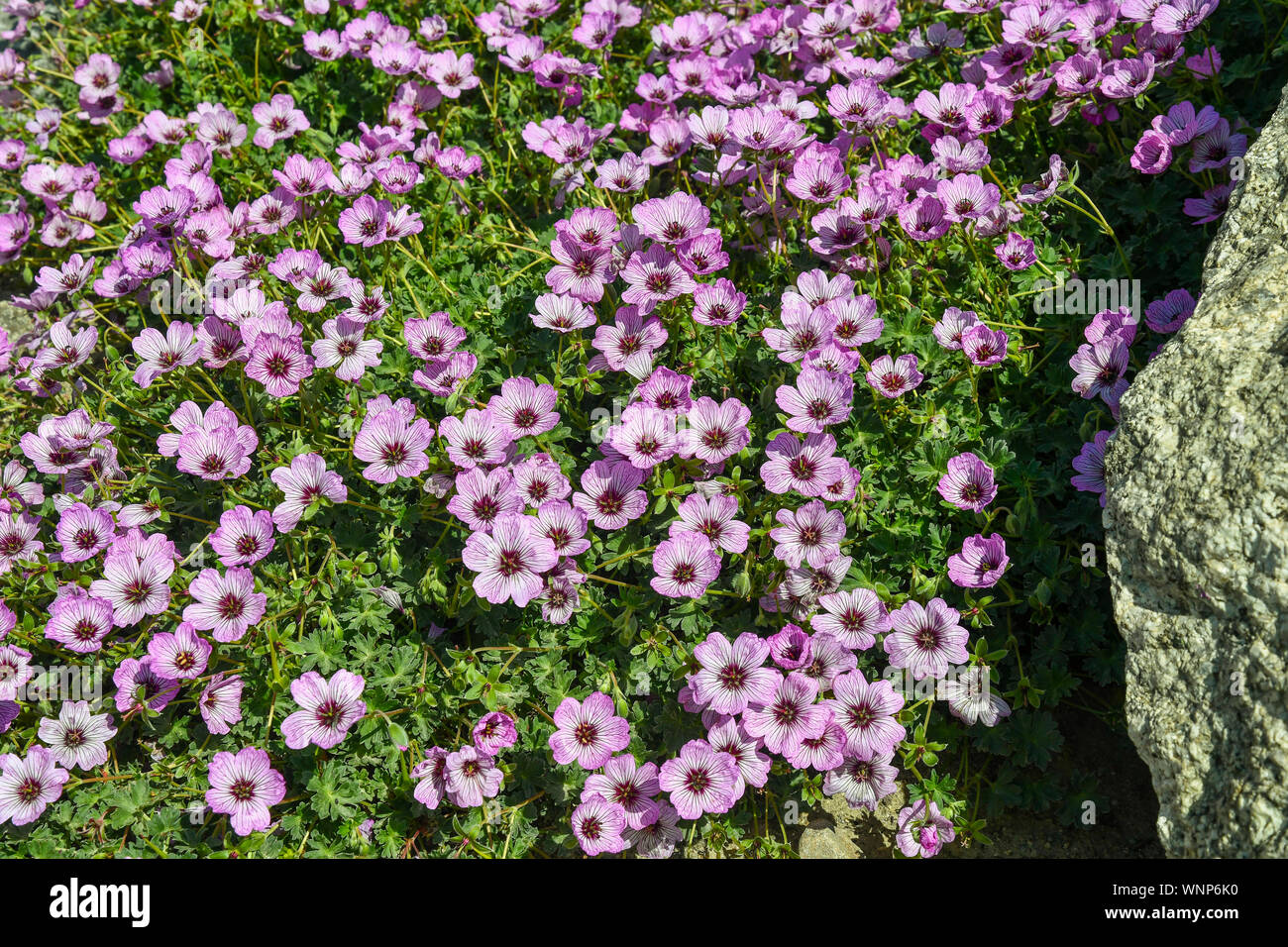The delicate pink blooms of Alpine stork’s bill (Erodium reichardii) bring elegance and charm to gardens. Growing these wildflowers from seed yourself is deeply rewarding Proper storage, sowing and germination techniques are key to success. This guide provides a thorough overview of best practices for Alpine stork’s bill seed care.
Storing Alpine Stork’s Bill Seeds
Careful storage is vital for maintaining Alpine stork’s bill seed viability Follow these steps
-
Harvest seeds when pods dry and split on the plant. Gently twist off pods and collect seeds inside.
-
Spread seeds on a paper towel or tray Allow to dry completely for 1-2 weeks in a well-ventilated area
-
Transfer thoroughly dried seeds to an airtight glass jar or resealable bag.
-
Store in a cool, dark place away from sunlight and moisture. Proper storage keeps seeds viable for several years.
Controlled drying, sealed containers and cool temperatures prevent mold growth and premature germination in storage. With attentive care, your treasured seeds remain ready for sowing when conditions are optimal.
Sowing Alpine Stork’s Bill Seeds
The right sowing techniques help your Alpine stork’s bill seeds flourish into healthy seedlings.
-
Sow in early spring after frost danger passes. This gives ample establishment time before summer.
-
Prepare well-draining potting mix of equal peat moss, perlite and vermiculite.
-
Scatter seeds over soil surface and gently press in. Avoid burying too deep.
-
Keep soil consistently moist, misting with a spray bottle to avoid disturbing seeds.
-
Place seed tray in a sunny area with 65-75°F (18-24°C) temperatures for germination.
With attentive sowing practices, your Alpine stork’s bill seeds will sprout readily to become vigorous young seedlings.
Germinating Alpine Stork’s Bill Seeds
Specialized germination methods unlock your Alpine stork’s bill seed’s potential. Consider these techniques:
-
Cold stratification mimics winter conditions, satisfying dormancy requirements. Refrigerate seeds with moisture for 1-3 months.
-
Pre-soak seeds in warm water overnight before sowing to accelerate germination.
-
Ensure seeds receive ample sunlight or grow lights to activate germination.
-
Have patience! Germination varies based on conditions and seed age. Persistence pays off.
Stratification, pre-soaking, proper lighting and patience facilitate robust germination rates for your treasured Alpine stork’s bill flower seeds.
Alpine stork’s bill rewards gardeners who invest care into storing, sowing and germinating its seeds correctly. Follow these best practices for success with these elegant wildflowers from seed to bloom. Your efforts will be rewarded with vigorous germination and healthy seedlings ready to flourish into botanical beauties.

k
Starting Zonal Geraniums From Seed ( a GREAT Flower for Beginners!) // Garden Answer
FAQ
How to germinate alpine seeds?
Do flower seeds need to be covered to germinate?
How do you store harvested flower seeds?
How long do impatiens seeds last?
|
Flower Type
|
Average Storage Life (Years)
|
|
Impatiens
|
1-2
|
|
Larkspur
|
1-3
|
|
Lavender
|
1-3
|
|
Lisianthus
|
2-3
|
Are Alpines available as seed?
Many alpines vary from seed. Size, flower colour and abundance are just some variants. Many rare plants are only available as seed. As an AGS member, you can join our annual Seed Exchange. This grants you access to more than 5,000 different kinds of seed. Start by researching the plants you’d like to grow.
Can alpine seeds grow in winter?
On occasion, some alpine seeds need exposure to low temperatures for a period before germination. (An average UK winter should provide the right temperatures.) Sowing seed later in the year could delay germination until the following winter or spring. From compost to pots, here’s what you need to support your alpine seed:
When can I plant alpine seeds?
Find out more about our Seed Exchange here. Usually, you can sow your seeds straight away. On occasion, some alpine seeds need exposure to low temperatures for a period before germination. (An average UK winter should provide the right temperatures.) Sowing seed later in the year could delay germination until the following winter or spring.
How do I support my alpine seed?
From compost to pots, here’s what you need to support your alpine seed: Most alpines suit a compost made from three parts John Innes Compost No 1 (by volume) and one part concreting sand. (Concreting sand is also known as grit or coarse sand.)
